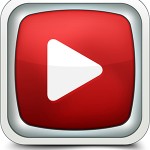Why Use YouTube?
 YouTube is the 2nd largest search engine next to Google. People upload more than 100 hours of video per minute to YouTube. It’s one of the best ways to communicate to a wide audience, whether you’re promoting programs or providing information to students. Here are a few reasons why YouTube is great.
YouTube is the 2nd largest search engine next to Google. People upload more than 100 hours of video per minute to YouTube. It’s one of the best ways to communicate to a wide audience, whether you’re promoting programs or providing information to students. Here are a few reasons why YouTube is great.
Improve your Search Engine Optimization
Video is one of the most popular content formats, and it’s regularly shared via social media. Google and other search engines tend to favour video, so sharing video via YouTube with good titles, descriptions and tags is a great way to improve your search engine ranking.
Powerful Branding
Video is a fast and effective way to convey your brand messages. People respond well to visual cues, and video is a perfect method for capturing the emotion and physical attributes of what you’re promoting.
Show, Don’t Tell
Video is a great way to demonstrate concepts that are not easily explained in text form. Show your students through screen capture videos, live demonstration or even drawing on a white board.
Get Your Message to a Wider Audience
Not only is YouTube the most popular video platform on the planet, videos themselves are highly shareable. Consider how often you see videos pop up in your Timeline on Facebook, or in your Twitter feed. How often do people email you videos? Video can be spread far and wide very easily.
You Don’t Need a Huge Budget
While there is some merit in having certain types of videos produced by professionals, not every video needs a 6 figure budget. You can create effective videos of lectures, demonstrations, and more quickly and easily with minimal video equipment.
Video is Mobile Friendly
With many students using smart phones, video is a great platform to reach them. YouTube is highly optimized for mobile devices and the majority of students are already using it.
YouTube in the Classroom
A study by Pearson Education (2010), Social Media in Higher Education, found that YouTube is the most common social media service used to communicate with students. Not surprising, this communication tool provides an alternative to traditional methods of sharing information, including lectures, podcasts, and current news.
YouTube can also be used as a repository for student digital work. Learners can set up their own channels, and then save projects there with the added value of attracting public feedback, which in turn raises the standard of their work. This saved work can also be used on class blogs if you have one.